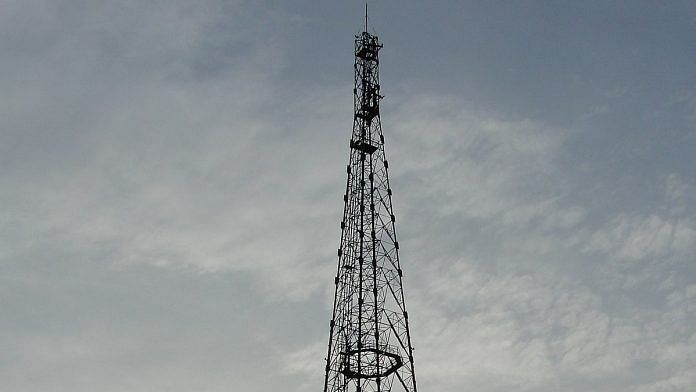Thank you dear subscribers, we are overwhelmed with your response.
Your Turn is a unique section from ThePrint featuring points of view from its subscribers. If you are a subscriber, have a point of view, please send it to us. If not, do subscribe here: https://theprint.in/subscribe/
India’s move to delicense 500 MHz of the 6 GHz band (5925–6425 MHz) is a significant regulatory change, enabling low and very-low-power systems such as Wi-Fi 6E and 7 to use unlicensed. In contrast to the congested 2.4/5 GHz bands, this mid-band is suitable for high-speed, low-latency requirements such as 4K streaming, AR/VR, IoT, and HD calls. Wi-Fi 6E can deliver up to 9.6 Gbps. The Broadband India Forum appreciated the move but asked for another 160 MHz to support dual 320 MHz channels. This action strengthens India’s digital public infrastructure in cities, villages, education, and healthcare, further advancing the “Viksit Bharat” mission.
The Licensing Model of the Indian Telegraph Act, 1885, and the Telecommunications Act, 2023, has complicated, expensive processes suited for mass-market 4G/5G and satellite networks with high service level requirements. The Delicensing Model, on the other hand, has low-friction access suited for indoor/outdoor low-power devices and encourages quick, affordable installations.
India now joins more than 100 nations in opening this band. Indoor use is limited to 30 dBm EIRP to avoid interference, much less than the 53 dBm permitted in 5 GHz. Highly-low-power limits pertain outside to shield sensitive systems such as ISRO’s satellite uplinks. Use is prohibited on oil rigs, vehicles, boats, planes below 10,000 feet, and unmanned aerial vehicles. All users are on a non-interference, non-protection basis with no incumbents’ blocking rights.
Compulsory protection such as Automated Frequency Coordination and dynamic frequency choice provide for safe coexistence. The reform allows high-speed wireless for India’s digital future without the license bottleneck.
Strategic Rationale & Market Impact
The decision by the Government of India to delicense 500 MHz of the 6 GHz band (5925–6425 MHz) is a landmark move towards upgrading digital infrastructure. It facilitates ultra-high-speed Wi-Fi (up to 9.6 Gbps), which enables data-hungry applications like augmented reality, high-definition streaming, immersive games, and new metaverse platforms. This aligns with the National Digital Communications Policy by lowering the cost of access to the spectrum, especially for rural and semi-urban regions. Community Wi-Fi in these areas could add ₹25,000 crore to GDP every year through broadband penetration and digital entrepreneurship.
In contrast to licensed spectrum, which entails auction, regulatory lag, and heavy capital outlay, delicensed spectrum needs only a compliance with technical standards, enabling quicker, low-cost market entry. The Department of Telecommunications (DoT) supports a shared-economy model with a call for innovation by Original Design Manufacturers (ODMs), Internet Service Providers (ISPs), and system integrators. Telecom operators are able to combine unlicensed 6 GHz with mid-band spectrum licensed to improve service quality and return on investment. Device makers and integrators, in turn, are gearing up for deployments of Wi-Fi 7.
The DoT’s current consultative process (open until June 15, 2025) is intended to form well-balanced regulatory norms that promote innovation along with public safety and integrity of satellite systems.
Actionable Framework & Next Steps
- Technical Audit: Undertake RF surveys for the evaluation of present-day interference and verification of 6 GHz suitability in regions (urban vs. rural).
- Regulatory Advocacy: Create consortiums (e.g., Broadband India Forum) to consolidate stakeholder feedback towards a scalable, future-proof delicensing model.
- Ecosystem and Pilot Development: Organize workshops with academia, telcos, and OEMs to define 6 GHz best practices, while running pilot use-cases (e.g., AR/VR telemedicine, smart factories) to monitor KPIs and guide efficient rollout.
- Consumer Education: Roll out awareness of 6 GHz Wi-Fi advantages earlier broadband, IoT enablement, and new revenue opportunities (e.g., local co-working centers).
CCPA 2025: Crackdown on Illegal Radio Devices
The Central Consumer Protection Authority (CCPA) has released the 2025 Guidelines to stem illegal online marketing of radio equipment such as walkie-talkies. Laid down after consultation with the Department of Telecommunications and Ministry of Home Affairs, the guidelines are aimed at unregistered devices that compromise public safety and clog emergency networks. Several online listings lack legal notices under the Indian Telegraph Act, 1885, Wireless Telegraphy Act, 1933, or exemptions from the 2018 Low Power Radio Frequency Devices Rules, which mislead consumers.
Rules only allow walkie-talkies with Equipment Type Approval and approved frequencies to be retailed. Platforms and sellers have to reveal technical information, verify regulatory compliance, purge uncertified goods, and ban deceptive advertisements. Unauthorized-frequency devices should be marked. Crimes are punishable under the Consumer Protection Act, 2019. CCPA also enforces seller authentication, automatic surveillance, and consumer disclosures, and has already marked 17,000 offenses.
In Reliance Infocom Ltd. v BSNL (2008) 10 SCC 535, the Supreme Court emphasized proper classification of wireless services for regulatory fees. Vikas Luthra v MCD (2016) addressed health issues from Wi-Fi towers, rejected due to compliant emissions. In Ingram Micro (Customs), WAPs with MIMO but without LTE were exempted, in favor of legal certainty and market development for compliant Wi-Fi devices.
These pieces are being published as they have been received – they have not been edited/fact-checked by ThePrint.


